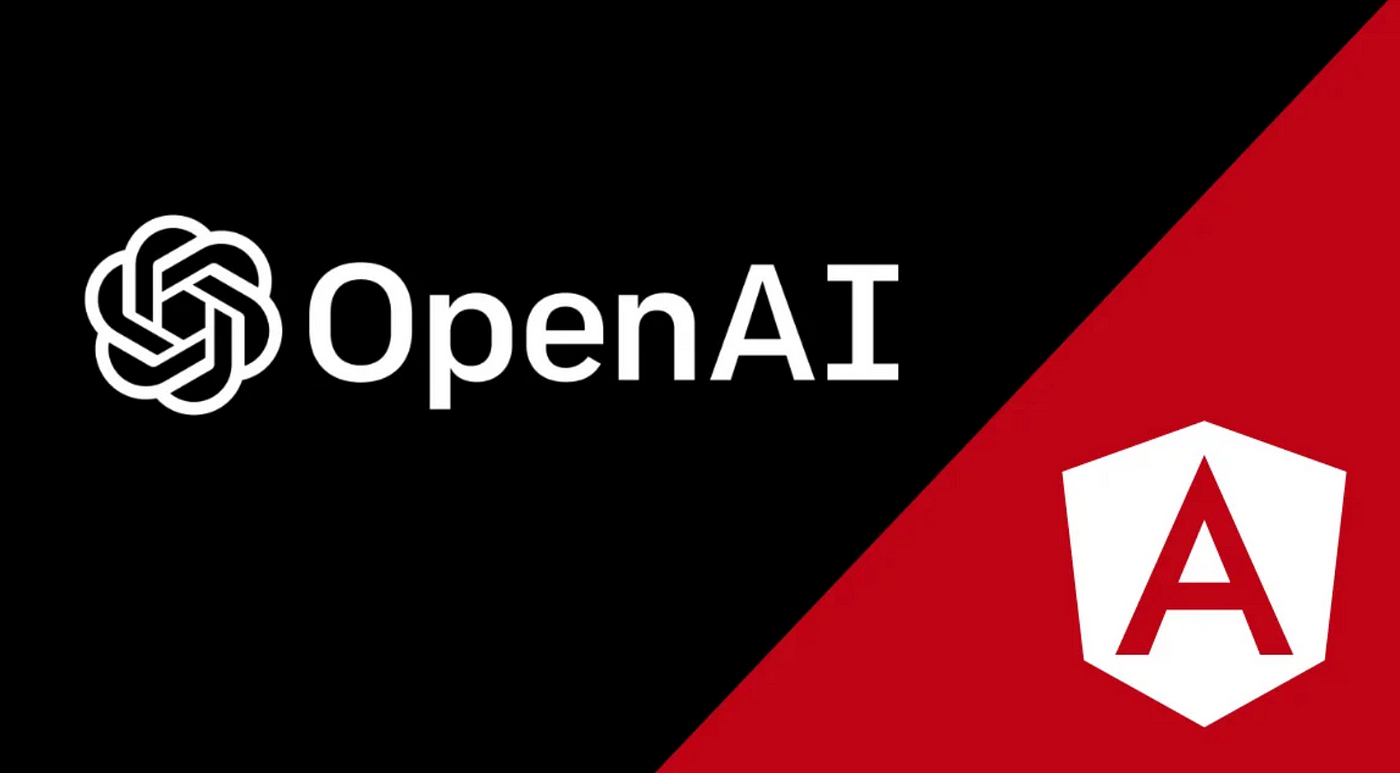The Marriage of Angular and ChatGPT
 Pallav Singh
Pallav SinghTable of contents
- Introduction
- The Rise of Conversational AI
- The Marriage of Angular and ChatGPT
- Benefits of OpenAI ChatGPT Integration in Angular Applications
- Getting Started: Integrating ChatGPT into Angular
- Example: Building a Weather Chatbot with Angular and ChatGPT
- Step 1: Set Up Angular Project
- Step 2: Install OpenAI API Client
- Step 3: Create Weather Chatbot Component
- Step 4: Implement Chatbot Logic
- Step 5: Implement Chatbot UI
- Step 6: Add Styles (weather-chatbot.component.css)
- Step 7: Get OpenAI API Key
- Step 8: Run the Angular App
- Conclusion

Introduction
In today's fast-paced digital world, user expectations have evolved significantly. Web applications are no longer limited to static interfaces; users now seek dynamic and interactive experiences. To cater to these demands, developers are constantly exploring innovative technologies to enrich their applications. One such groundbreaking advancement is the integration of OpenAI's ChatGPT into Angular applications, bringing the power of conversational AI to the forefront.
The Rise of Conversational AI
Conversational AI has emerged as a transformative technology that enables machines to understand and interact with humans using natural language. OpenAI's ChatGPT, a state-of-the-art language model, has proven to be a game-changer in this domain. With its remarkable language understanding capabilities, ChatGPT can engage users in human-like conversations, opening up exciting possibilities for application developers.
The Marriage of Angular and ChatGPT
Angular, a popular web application framework, provides developers with the tools to build robust and feature-rich front-end applications. By integrating ChatGPT into Angular projects, developers can create dynamic conversational interfaces that take user interactions to a whole new level.
Benefits of OpenAI ChatGPT Integration in Angular Applications
Enhanced User Engagement: The ability to interact naturally with an application significantly boosts user engagement. With ChatGPT, developers can build chatbots, virtual assistants, and interactive widgets that respond contextually, keeping users captivated and immersed in the application.
Personalized User Experiences: ChatGPT learns from user interactions, allowing developers to tailor responses and recommendations to individual users. This personalization fosters a sense of connection with the application, enhancing user satisfaction and retention.
Real-Time Assistance and Support: By integrating ChatGPT, applications can provide real-time support and assistance to users. Whether it's answering queries, offering guidance, or resolving issues, the conversational AI enriches the user experience with instant and accurate responses.
Accessibility and Inclusivity: Natural language interfaces are inherently more accessible, catering to a broader audience, including users with disabilities or language barriers. With ChatGPT, developers can create applications that are more inclusive and user-friendly.
Automation and Efficiency: Routine tasks such as form filling and content generation can be automated using ChatGPT. This automation streamlines workflows, freeing up resources and allowing developers to focus on more complex challenges.
Getting Started: Integrating ChatGPT into Angular
The process of integrating ChatGPT into Angular applications is well-documented and straightforward. Developers can access the OpenAI developer portal, which offers comprehensive resources, tutorials, and API documentation to facilitate a seamless integration experience.
Example: Building a Weather Chatbot with Angular and ChatGPT
In this unique example, we'll create a weather chatbot using Angular and integrate OpenAI's ChatGPT API to provide users with real-time weather information for their desired locations.
Step 1: Set Up Angular Project
Create a new Angular project using the Angular CLI:
ng new weather-chatbot-app
cd weather-chatbot-app
Step 2: Install OpenAI API Client
Install the OpenAI API client in your Angular project:
npm install openai
Step 3: Create Weather Chatbot Component
Generate a new component to host the weather chatbot:
ng generate component weather-chatbot
Step 4: Implement Chatbot Logic
In the weather-chatbot.component.ts file, add the necessary code to interact with OpenAI's ChatGPT and fetch weather data:
import { Component, OnInit } from '@angular/core';
import * as openai from 'openai';
@Component({
selector: 'app-weather-chatbot',
templateUrl: './weather-chatbot.component.html',
styleUrls: ['./weather-chatbot.component.css']
})
export class WeatherChatbotComponent implements OnInit {
messages: string[] = [];
userMessage: string = '';
constructor() { }
ngOnInit(): void {
// Initialize the chatbot with a greeting
this.addMessage("Chatbot: Hi there! I can help you with weather information. Please type your location.");
}
onSendMessage(): void {
// Add the user's message to the chat
this.addMessage("User: " + this.userMessage);
// Call OpenAI API to get the chatbot's response
const prompt = "User: " + this.userMessage + "\nChatbot:";
const apiKey = 'YOUR_OPENAI_API_KEY'; // Replace with your actual API key
const gptResponse = openai.Completion.create({
engine: 'davinci',
prompt: prompt,
max_tokens: 100,
api_key: apiKey
});
// Extract and add the chatbot's response to the chat
const chatbotMessage = gptResponse.choices[0].text.replace('Chatbot:', '');
this.addMessage("Chatbot:" + chatbotMessage);
// Fetch weather data for the user's location (dummy function)
this.fetchWeatherData(this.userMessage);
// Clear the user's message input
this.userMessage = '';
}
fetchWeatherData(location: string): void {
// Dummy function to fetch weather data from a weather API based on the user's location
// Replace this with an actual weather API integration
// Display weather information in the chat
this.addMessage(`Chatbot: The weather in ${location} is sunny with a temperature of 25°C.`);
}
addMessage(message: string): void {
this.messages.push(message);
}
}
Step 5: Implement Chatbot UI
In the weather-chatbot.component.html file, create the weather chatbot user interface:
<div>
<div class="chatbox">
<div *ngFor="let message of messages">{{ message }}</div>
</div>
<input type="text" [(ngModel)]="userMessage" (keyup.enter)="onSendMessage()" placeholder="Type your message here...">
<button (click)="onSendMessage()">Send</button>
</div>
Step 6: Add Styles (weather-chatbot.component.css)
Add some basic styles to the weather chatbot interface:
.chatbox {
border: 1px solid #ccc;
border-radius: 5px;
padding: 10px;
margin-bottom: 10px;
height: 300px;
overflow-y: scroll;
}
input {
width: 70%;
padding: 5px;
margin-right: 5px;
}
button {
padding: 5px;
}
Step 7: Get OpenAI API Key
If you don't have an OpenAI API key, sign up for an account at https://openai.com and generate an API key from the developer dashboard.
Step 8: Run the Angular App
Finally, run the Angular app to see the weather chatbot in action:
ng serve
Conclusion
The integration of OpenAI's ChatGPT into Angular applications marks a significant leap forward in the world of conversational AI. By enabling dynamic and interactive experiences, developers can create applications that are more engaging, user-centric, and efficient. As technology continues to evolve, we can expect to witness even more sophisticated applications leveraging the potential of conversational AI. Embrace this innovation, and embark on a journey to build intuitive and intelligent Angular applications that cater to the demands of the modern user.
Subscribe to my newsletter
Read articles from Pallav Singh directly inside your inbox. Subscribe to the newsletter, and don't miss out.
Written by

Pallav Singh
Pallav Singh
I am a software developer from India. I'm currently working full-time at an IT Service Company. I'm here to share my journey and my learnings with the community.